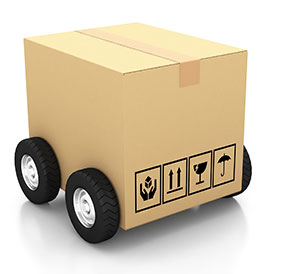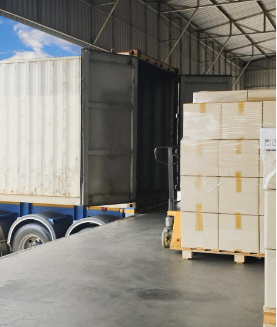
Logistics is the practice of moving resources from origin to destination as efficiently as possible. In retailing, this refers to the process ordering from a manufacturer or vendor and getting the merchandise into the hands of your customers with the least cost, time and effort.
The best way to approach logistics for your business is to understand the goal. You want to get the fastest, cheapest and safest delivery of goods with the least headache and opportunity for things to go wrong. Put simply, you want to balance performance and cost and get the most of the former with the least of the latter. Logistics management is the organized use of information, analysis and techniques to eliminate bottlenecks and cost in order optimize this process.
If you've ever shipped merchandise, you already understand the outbound version of logistics. A customer orders an item from you and pays you for shipping. You make sure that the right items (quantity, size and color) are packaged securely and select a shipping provider based on their speed, reliability and cost. If you're shipping internationally, you need to fill out a customs declaration that describes the contents of the shipment. The next step is to monitor the shipment to assure that it arrived at its destination intact. A well formulated outbound logistics plan eliminates cost in this process and successfully delivers the shipment to the customer in a timely manner.
The portion of logistics with an internal focus is inbound logistics. In this process, you have an inventory management system, perhaps an automated system, which lets you know when you need to reorder an item. This system informs you of the length of time it will take for delivery, the shipping cost options and other useful information such as reorder points for specific items. By striving to improve upon your inbound logistics system, you can cut costs and provide a boost to sales.
In logistics, knowledge is power and small businesses achieve cost savings by understanding the components of cost and time in inbound and outbound shipments. This includes understanding postal rates and shipping times, and if shipping internationally, any import duties that might apply at the destination country. It also includes working with your shipping provider to understand where savings can be achieved. Many shippers charge extra for processing waybills with handwritten addresses but discount for using labels generated from their websites or specialized online applications. In addition, understand that shipping rates are not always set in stone. If you ship several packages a month, discuss volume discounts with your shipping provider.
The acknowledged master of retail logistics management is Walmart. Walmart was so successful at rapidly moving merchandise through its warehouse system to its stores that the U.S. Army, the former champion, studied their techniques. Walmart optimized its supply chain so well that it began to bypass its warehouses and truck fleets and get shipments sent directly to their stores. Nearly two decades ago, Walmart transferred responsibility for keeping its shelves stocked to its larger vendors. It may be difficult to implement a logistics management system to rival Walmart's, but by applying some of the above principles you can make positive changes that will benefit your business in the short and long-term.







